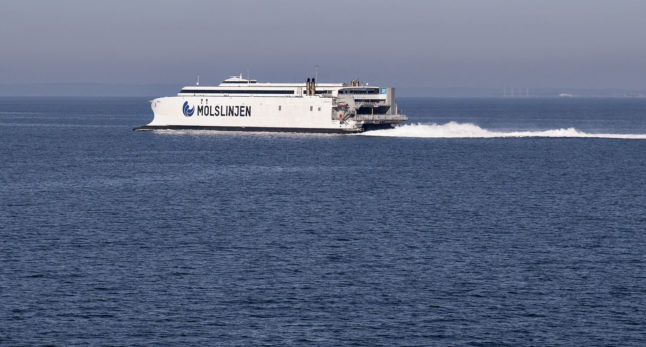The ferry company’s head of communications confirmed to Danish media that the Sjællands Odde-bound boat had been forced into the evasive manoeuvre shortly after leaving Aarhus.
Witnesses who spoke to the tabloid newspaper BT were reported as saying that passengers had been informed by the captain that the ship which the ferry moved to avoid was a Russian warship, but Molslinjen’s spokesperson said this could not be confirmed.
“I don’t know this but I assume that the experienced captain knows this. So I’m thinking that if he has said that, it’s very probably correct. They can follow [other vessels] with their equipment and it’s their job to know what they are meeting,” the spokesperson, Jesper Maack, told the Ekstra Bladet daily.
The Danish Defence Command (Forsvarskommandoen), Denmark’s military command authority, has confirmed that a Russian frigate was sailing north through the Great Belt strait on Friday.
Denmark’s navy routinely monitors Russian military ships which sail through Danish waters, the authority told newswire Ritzau.
The Defence Command said it had no knowledge of any evasive manoeuvre performed by the Molslinjen ferry.
Maack told BT that the ferry made the decision to turn while still a good distance from the ship because the ship was not following relevant maritime rules and did not respond over radio.
The manoeuvre was undramatic and no one was in danger, he added.



 Please whitelist us to continue reading.
Please whitelist us to continue reading.
Member comments